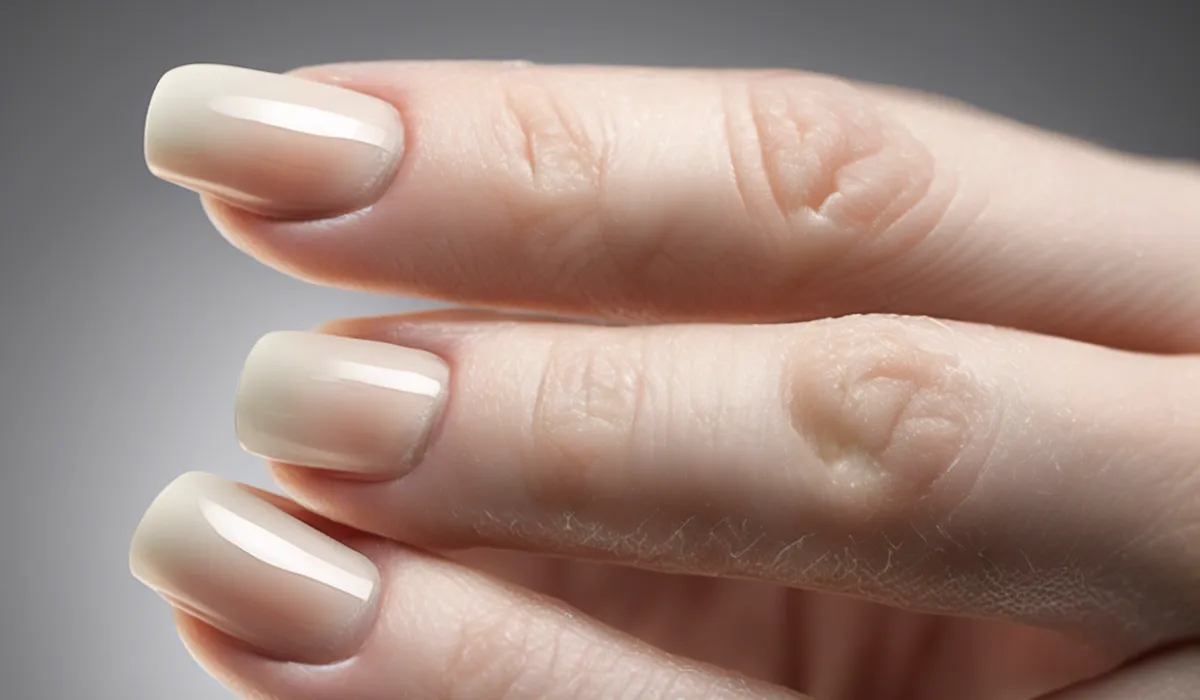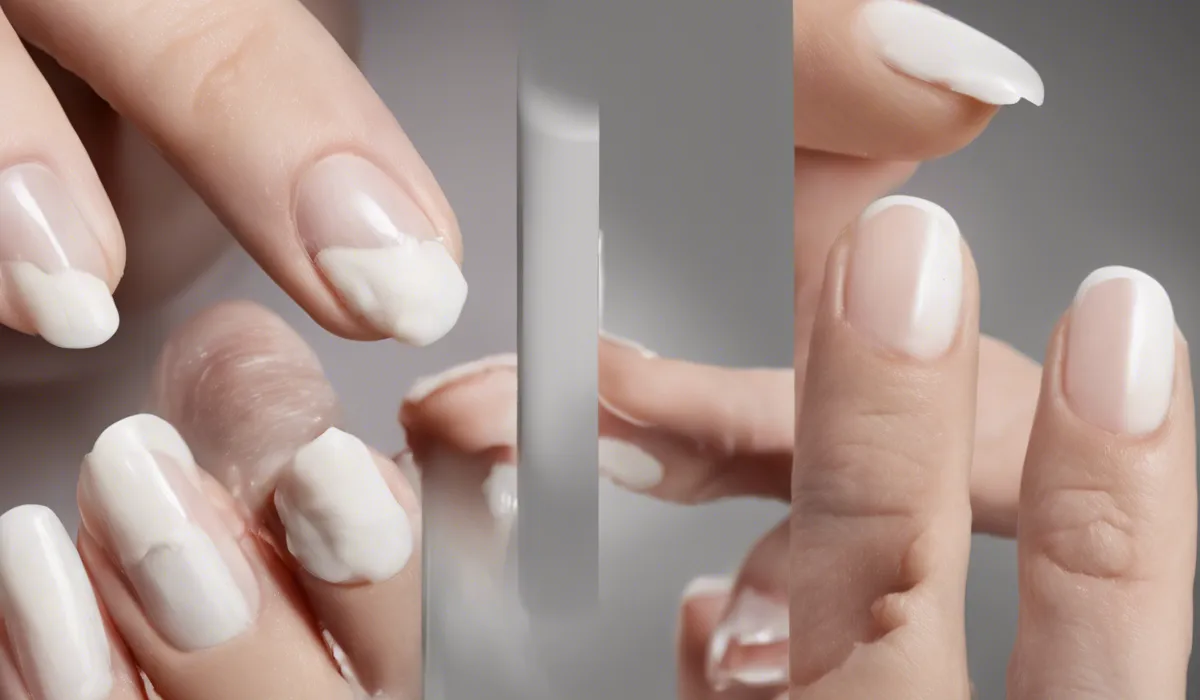To get rid of nail mold, thoroughly clean the affected area with soap and water. Disinfect nails with antifungal treatments or diluted vinegar.
Keep nails dry and exposed to air. Consult a doctor for persistent cases.
Understanding Nail Mold

What Is Nail Mold?
Nail mold is a condition that appears as a discolored patch on or under a nail. The discoloration can be green, black, brown, or yellow.
Unlike what its name suggests, nail mold is not caused by mold but by a bacterial infection. It often occurs when there is damage to the nail or the skin around it.
Common Causes of Nail Mold
The primary cause of nail mold is the introduction of bacteria to the nail bed, typically through a crack or break in the nail.
This can happen from physical injuries, like banging your nail against something, or from the moisture trapped under artificial nails. Poor nail hygiene can also contribute to its development.
Nail Mold Versus Nail Fungus
It is important to distinguish nail mold from nail fungus. Nail fungus, or onychomycosis, is caused by fungal organisms and often appears as a white or yellow spot under the tip of the nail.
As it spreads, the nail can become thicker and crumble at the edge. Nail mold, caused by bacteria, typically presents faster and with more distinct coloring.
Preventive Measures

Maintaining Nail Hygiene
Good nail hygiene is key to preventing nail mold. This means regularly washing and drying your hands and feet.
Nails should be kept clean and trimmed straight across to avoid ingrown nails, which can lead to infections.
Keeping Nails Dry and Clean
Moisture is a breeding ground for bacteria. After washing your hands or feet, dry them thoroughly, paying special attention to the nails and the spaces between them.
If you have sweaty feet, change your socks throughout the day to keep your feet as dry as possible.
Using Sterilized Nail Tools
It is important to use sterilized nail tools to prevent the spread of bacteria and fungus. This means either using disposable tools or sterilizing reusable tools after each use. Do not share nail tools with others.
Regular Nail Maintenance
Regular visits to a professional for nail care can help prevent nail mold, especially for those who wear artificial nails.
Professionals are trained to spot early signs of infection and can provide appropriate care to prevent its progression.
Treatment Options for Nail Mold

Over-the-Counter Treatments
There are various over-the-counter antifungal treatments available that can be effective for mild cases of nail mold.
These treatments come in the form of creams, ointments, and sprays. It is important to follow the instructions on the packaging and continue use for as long as recommended, even if the symptoms appear to clear up sooner.
Home Remedies
Home remedies can also be used to treat nail mold. Soaking the affected nail in diluted vinegar can help, as vinegar has natural antifungal properties.
Tea tree oil is another natural option that can be applied directly to the nail, thanks to its antifungal and antiseptic properties.
Professional Consultation
If the nail mold persists or worsens, it is crucial to consult a dermatologist or podiatrist. A healthcare professional can accurately diagnose the condition and recommend more potent treatments.
They can also rule out any underlying conditions that may be contributing to the problem.
Prescriptions and Advanced Treatments
In severe cases, prescription antifungal medications may be necessary. These can include topical treatments or oral medications.
For very persistent cases, advanced treatments like laser therapy might be considered. These treatments target the bacteria or fungus directly and can be very effective.
Aftercare to Prevent Recurrence
After treating nail mold, aftercare is essential to prevent it from coming back. Continue practicing good nail hygiene, keep your nails dry, and avoid sharing nail tools. If artificial nails were the cause, take a break from them to allow your natural nails to recover fully.
FAQs About Getting Rid of Nail Mold
How can I clean nail mold at home?
To clean nail mold at home, wash the affected area with soap and water, then apply an antifungal treatment or diluted vinegar to disinfect the nails.
What are effective antifungal treatments for nail mold?
Effective antifungal treatments for nail mold include over-the-counter antifungal creams, ointments, or solutions specifically designed for nail infections.
Can vinegar be used to treat nail mold?
Yes, diluted vinegar can be used as a home remedy to treat nail mold due to its antifungal properties.
What should be done to prevent nail mold from recurring?
To prevent nail mold from recurring, keep your nails dry, clean, and exposed to air, and avoid environments that promote fungal growth.
When should I consult a doctor for nail mold?
You should consult a doctor for nail mold if the infection persists or worsens despite home treatment, or if you have underlying health conditions that may complicate the infection.
Final Thoughts
Eliminating nail mold requires diligent cleaning with soap and water, followed by the application of antifungal treatments or diluted vinegar.
It’s crucial to maintain dryness and allow air exposure for the nails. For stubborn mold, professional medical advice should be sought to ensure proper care and treatment.
